|
Ensenadenses Want to Bring Back their Traditional Carnival
By Maria E Curry
March/April 2023
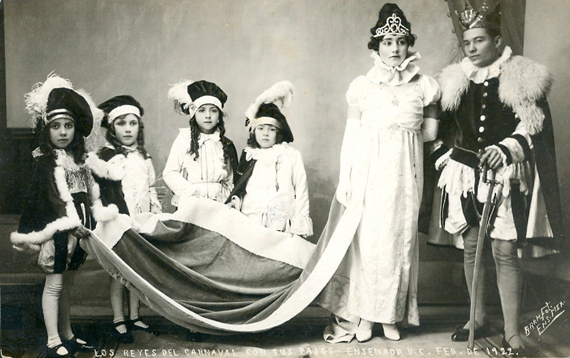 In this 1922 photo, the Ensenada Carnival royalty include Queen María Antonieta Cota Fernández and the Ugly King Álvaro Rivero. With them are the children Refugio Ramírez, Rosalva Ibarra, and two unidentified others.
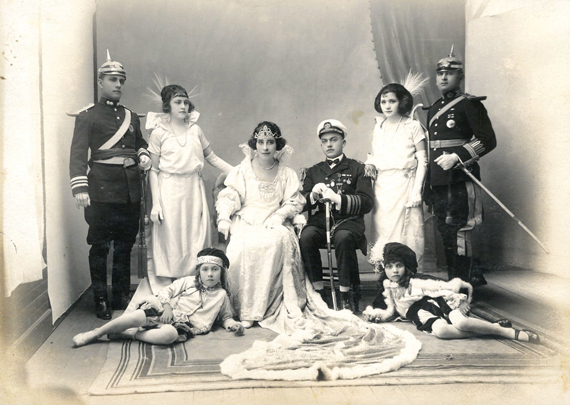 At the Carnival in 1923, the Royal Court featured Beatríz Cota Fernández as Queen and Carlos Alarcón as the Ugly King. They are accompanied by Pharaoh Sarabia, Enrique Palacios, two unidentified women, and the children Melquiades Verdugo and Lolita Weber. |
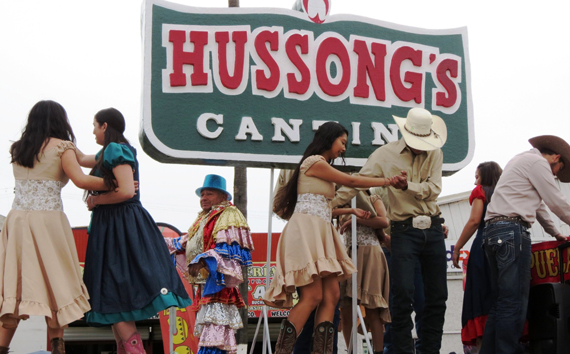 Ensenada Carnival celebrants dance the Calabaceado in 2017, in front of the oldest cantina in Mexico. Photo by cultural journalist Juan Carlos Domínguez Beltrán |
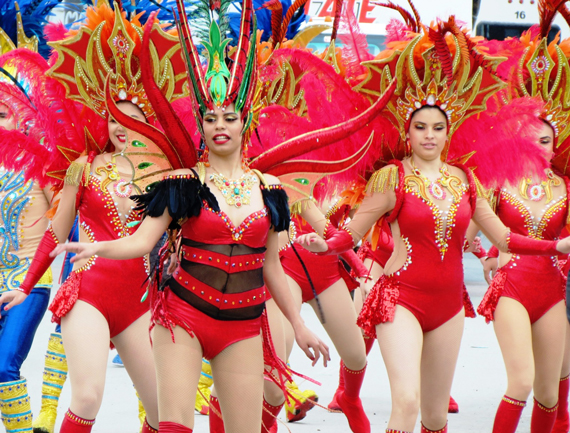 Women in the 2017 Ensenada Carnival parade. Photo by cultural journalist Juan Carlos Domínguez Beltrán |
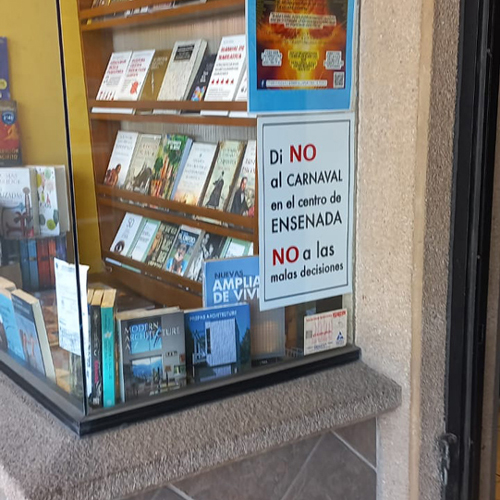 Ensenada business owners in Calle Ruíz oppose the Carnival with signs like this one that reads, “Say No to the Carnival in downtown. Say No to bad decisions.” The cultural community and members of pioneer families want to participate in organizing future Carnivals to make them more traditional, less commercial, and for the benefit of all. Courtesy Santos Cota |
The ancestral origins of Carnival (Carnaval in Spanish) in Mexico began in the sixteenth century and the tradition of holding celebrations in port cities dates to the second half of the nineteenth century, in Veracruz, Mazatlán, La Paz, and Ensenada, among others. The Carnival of Ensenada is a living example of heritage and roots, celebrating its 105th year in 2023. Ensenadenses consider Carnival their most traditional festivity and a group of citizens is complaining about changes in the time-honored festival format in recent years and a lack of community input.
In 2012, the municipal government moved the Carnival from downtown Ensenada to the Coastal Boulevard area. The official position was that this would provide more space and security. Increased commercialization followed the change of venue, including contracts with beer companies and foreign entertainment promoters, changes that have alienated some residents, including pioneer families.
This year’s program, celebrated from February 16 to 21, featured elements of a traditional Carnival, such as the crowning of the king and queen and the parade bands and decorated cars, but it also had non-traditional groups and bands performing on main stages. An outside private company led the planning and event coordination without community input.
In the recent past, the Carnival has begun on the Thursday before Ash Wednesday with the traditional "burning of the bad mood," in which a papier-mache figure is set on fire; its burning is a cue for people to let go of their worries and enjoy Carnival’s official beginning. The following days see the coronation of the Carnival king, queen, and the rest of the court, adults and children included. It continues with parades on Saturday, Sunday, and Tuesday. There are also amusement park rides, food stalls, and arts and crafts vendors. Popular dances take place in traditional venues including the historic Spanish Colonial Revival style former Hotel Riviera, now a cultural center.
Not long ago, the community requested that the Carnival be returned to the historic downtown core. In response, this year’s event was spread out across five areas in the city center. However, some downtown business owners do not want the Carnival in their area, citing unruly crowds and disruption to business. The oldest families in Ensenada and others who favor a traditional Carnival want the festival to be as traditional as possible, and that begins with the location, near the city’s first town square.
Ensenadenses are asking that their most traditional festival, their cultural heritage, be returned to its original location now and forever. They submit that the logistical, social, and urban problems that may surface during the five-day celebration are due to over-commercialization and that the problems can be solved through thoughtful planning with support from corresponding authorities and an organized community willing to help preserve their traditions.
If the organized Ensenadenses succeed in convincing the municipal government, we will see a Carnival with more traditional activities in its original location by 2024.
|
2025
2024
2023
2022
2021
2020
2019
2018
2017
2016
2015
|








